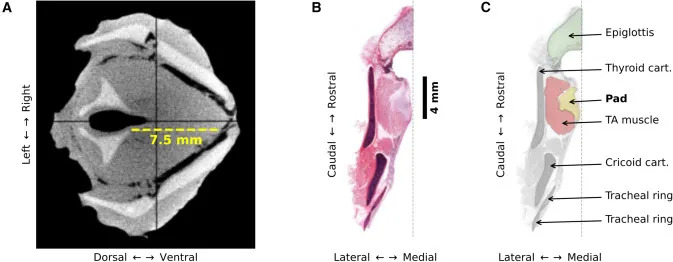A gray cat stares quietly at a nearby orange tabby, squinting her eyes, flattening her ears, and licking her lips. The tabby glares back, wrinkles his nose, and pulls back his whiskers. Cat people know what’s about to go down: a fight. If looks and growls don’t resolve the budding tiff, claws will pop out and fur will fly.
Those faces aren’t the only ones cats make at each other, of course—not by a long shot. In a study published this month in Behavioural Processes, researchers tallied 276 different feline facial expressions, used to communicate hostile and friendly intent and everything in between. What’s more, the team found, we humans might be to thank: Our feline friends may have evolved this range of sneers, smiles, and grimaces over the course of their 10,000-year history with us.
“Many people still consider cats—erroneously—to be a largely nonsocial species,” says Daniel Mills, a veterinary behaviorist at the University of Lincoln who was not involved in the study. The facial expressions described in the new study suggest otherwise, he notes. “There is clearly a lot going on that we are not aware of.”
Cats can be solitary creatures, but they often form friendships with fellow kitties in people’s homes or on the street; feral cats can live in colonies of thousands, sometimes taking over entire islands.
Lauren Scott, a medical student and self-described cat person at the University of Kansas, long wondered how all these felines communicated with one another. There has to be love and diplomacy, not just fighting, yet most studies of feline expression have focused on aggression.
Fortunately in 2021, Scott was studying at the University of California, Los Angeles (UCLA), just minutes from the CatCafé Lounge. There, human visitors can interact—and even do yoga—with dozens of group-housed, adoptable cats. From August to June, Scott video recorded 194 minutes of cats’ facial expressions, specifically those aimed at other cats, after the café had closed for the day. Then she and evolutionary psychologist Brittany Florkiewicz, also at UCLA at the time but now at Lyon College, coded all their facial muscle movements—excluding any related to breathing, chewing, yawning, and the like.
The pair discovered a total of 276 distinct facial expressions made toward other cats—not so far removed from the 357 produced by chimpanzees, Florkiewicz says, and well more than many had thought cats capable of. Each expression combined about four of 26 unique facial movements, including parted lips, jaw drops, dilated or constricted pupils, blinks and half blinks, pulled lip corners, nose licks, protracted or retracted whiskers, and/or various ear positions. By comparison, humans have 44 unique facial movements, although researchers are still working out how many different expressions they combine into, Florkiewicz says. Dogs have 27 facial movements, but again, their total number of expressions isn’t known.
In the current study, the duo found that the vast majority of the cats’ expressions were either distinctly friendly (45%) or distinctly aggressive (37%), the scientists say. The remaining 18% were—like the Cheshire Cat’s smile—so ambiguous that they fell into both categories.
What exactly the felines were “saying” to one another with these expressions remains unclear, Florkiewicz says. But overall, cats tend to move their ears and whiskers toward another cat during friendly interactions, and to move them away from their compatriot during unfriendly interactions. Constricted pupils and licking lips also tend to accompany such rivalrous encounters.
Interestingly, some of the cats’ friendly expressions resemble those made by people, dogs, monkeys, and other animals, Mills says, hinting that these species may share “a common play face.”
Although the researchers haven’t been able to compare their results with those of wild felines, they do know that all close relatives of the domestic cat (including its direct ancestor, the African wildcat), are ferociously solitary animals. Pet cats might have retained some of that defensive communication, Florkiewicz says, but these domestic descendants probably started to pick up friendly facial expressions as they gathered to await humans’ dinner leftovers.
Georgia Mason, a behavioral biologist at the University of Guelph, says she was “very impressed” by the new study. One day it might be used to design an app to help cat owners better understand their pets’ subtle cues, she adds. “This could really help the cat-human bond.”
In the meantime, the findings may help potential adopters select cats that are more likely to get along with their existing pets, Florkiewicz says. Should those fur babies be canine, however, all bets are off. Whether dogs also get the meanings of catty facial expressions remains to be determined.


